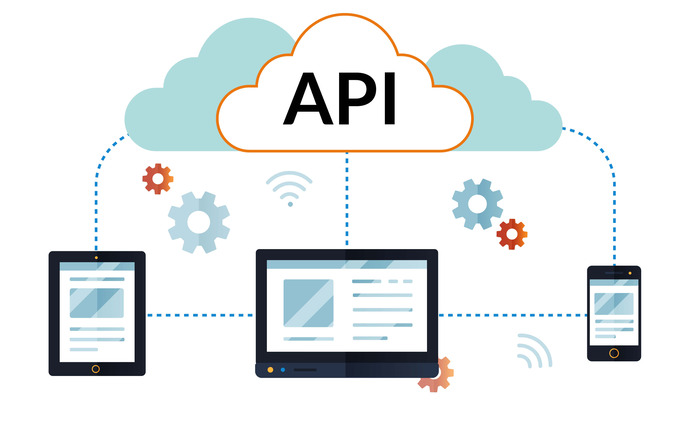APIs have become an integral part of modern technology and its development. They serve as the backbone of many applications and services. As more and more organizations digitize their operations, the adoption of APIS as standard practice is on the rise. Business Wire Reports show that usage among developers increased by 68% in 2022.
As API requests and responses have increased, optimizing performance and scalability has become a top priority. This is why, to ensure seamless API gateway performance, effective strategies like caching, load balancing & rate-limiting must be implemented consistently. These techniques are essential for achieving secure, highly-performant, reliable, and scalable APIs.
In this post, we’ll examine how these strategies can improve digital product engagement for businesses. We’ll look more closely at the most effective ways to implement an API gateway framework.
So, if you’re ready to supercharge your app user engagement, let’s jump in. We’ll start with a quick overview of the common issues with API frameworks.

API Gateway: Performance Challenges
An API allows two programs to communicate and exchange data seamlessly, serving as a bridge between the client and the application.
However, with the increasing complexity of modern applications and the rising demands of end-users, API gateways have to help manage many performance challenges. To ensure optimal performance and user experience, organizations must address these challenges too.
Typical Performance-Related Issues Faced by an API Gateway
API integration tools, traffic load, and app design are some of the factors that can affect the output of an API gateway. Issues could include:
- Complex database queries: Complicated queries slow down database operations, which, in turn, degrade performance.
- Large payload: Users sometimes send high volumes of data requests and responses, most of which are unnecessary.
- Network latency: Network speed & bandwidth impact the gateway performance vastly.
- Server-side load: Increased client traffic can overload your framework, resulting in poor performance.
Performance can also be affected by factors like API gateway security concerns, application and infrastructure design, and third-party components.
The Impact of Poor API Gateway Performance on Your Application
Poor performance of your management tool can significantly impact your software, especially in apps that require real-time data exchange. This often leads to:
- Slow response times
- Increased latency
- Poor user experience
- Dropped or failed requests
- Reduced availability and reliability
- Decreased scalability
- Loss of traffic
- High bounce rate
- Revenue loss
- Negative impact on brand reputation
Even a few milliseconds of delay can cause significant issues and user frustration. This is regardless of whether you’ve built a private API gateway using a custom domain or are using one of the open-source gateways on the market.
Caching Strategies for API Gateway Performance Optimization
Caching enhances access speed by storing regularly requested data for easy retrieval when needed. Caching results in several API gateway benefits:
- Improved response times
- Increased scalability
- Reduced network traffic
- Improved reliability
- Cost savings
- Better use of resources
Types of Caching Strategies for API Gateways
Caching strategies used in API gateways are:
- Client-side caching: This refers to storing data on the client’s side, This is typically in their web browser. Client-side caching techniques include HTTP cache headers, local storage, service workers, and cache API
- Server-side caching: this stores data on the server side of the integration tool.
- Distributed caching: a distributed cache is used here, with multiple frameworks accessing the data.
- In-memory caching: As the name implies, a cache stores data in memory for easy retrieval.
- CDN caching: This method improves availability and reduces latency by storing data in multiple geographically distributed servers.
Implementing Caching in an API Gateway
First, you must determine a cache strategy based on the stored data and the situation. You should consider several factors, including scalability, & API gateway costs, among others.
It is also important to closely monitor the cache’s performance and adjust caching parameters to ensure optimal performance.
Load Balancing Strategies for API Gateway Performance Optimization
By distributing incoming traffic across multiple servers, load balancing can help improve response times, increase availability, and ensure that no single server is overloaded.
Types of load balancing strategies
- Round-robin: A technique that distributes traffic evenly across servers in a circular fashion
- Least connections: A strategy that distributes traffic to the server with the least active connections.
- Least load: In this method, the least loaded node is selected.
- IP hash technique distributes traffic to specific servers based on the client’s IP address.
- A weighted round-robin strategy distributes traffic according to the capacity of each server.
Implementing Load Balancing in an API Gateway
Load balancing must be configured in the gateway configuration file, along with parameters such as server weights and load balancing algorithm.
For best performance, developers must monitor the performance after deployment and adjust parameters accordingly.

Rate limiting strategies for API gateway performance optimization
By controlling and minimizing the number of requests a client can make in a given period, rate limiting helps prevent overload on backend services.
Rate-limiting methods
- Fixed window: There is a limit on how many requests a user can make in a given time.
- Sliding time window. Several requests are allocated to users within a specific time frame, which cannot be exceeded.
- Fixed-rate limiting: Each user is limited to a certain number of requests per period e.
- Token bucket. In this method, the program allocates tokens to the user. Upon making a request, the program deducts tokens from the user’s account one at a time. Once the tokens have been exhausted, a request cannot be made until the next window.
- A leaky bucket allows clients to make requests only if the bucket is not full and if the bucket slowly leaks tokens over time.
Implementing Rate Limiting in an API Gateway
The team must first identify the rate-limiting requirements of the program, along with the algorithm design that best meets them.
Rate limiting should be set at a level appropriate for the program and implemented effectively. It is also necessary to apply any required changes to meet the desired level of protection.
Use cases
Caching
As a result of caching, fewer requests are made to your endpoint, improving latency and reducing requests.
When an API gateway caches a new copy of the resource, it uses that copy instead of directly making a new request to the endpoint to satisfy the client’s query. When it caches a new copy of the resource, it uses that copy instead of contacting the endpoint directly to satiate requests.
Load balancing
In load balancing, API calls are routed to the nearest gateway based on their basis. Several frameworks and other service infrastructures have been deployed globally to prevent latency problems and other unforeseen issues that may arise because of distance (for example, a travel app from Africa calling an API in Europe).
A simple example would be to have different subdomains for the gateways in different regions and to let the application decide which gateway is closest based on its logic. Lastly, a gateway ensures that incoming requests are distributed among all service instances by providing internal load balancing.
Rate Limiting
A rate limiter can prevent clients from overloading the infrastructure or downstream services by limiting the number of requests made within a certain period.
This way, the framework or downstream services can be protected against DDoS attacks or other forms of abuse that can degrade performance.
Rate limiting is practical for APIs that are publicly accessible or that are used by large numbers of clients.
Evaluating the Effectiveness of Caching, Load Balancing, and Rate Limiting Strategies in an API Gateway
An API gateway’s caching, load balancing, and rate-limiting processes can be assessed by monitoring key performance indicators. These metrics include the server load, response time, number of requests, error rate, and user experience.
Organizations can then make necessary adjustments on the go as required to optimize performance and supercharge their applications.
The best way to give customers a memorable user experience is through deploying an open-source API gateway that is robust, lightweight, and without sacrificing control. Tyk offers the best API gateway, delivering excellent security, governance, and time and cost savings.
As a result, businesses and development teams can develop quality software and achieve API gateway integration of complex data and systems. This allows them to scale quickly and manage their core architecture needs more efficiently — among several other benefits.